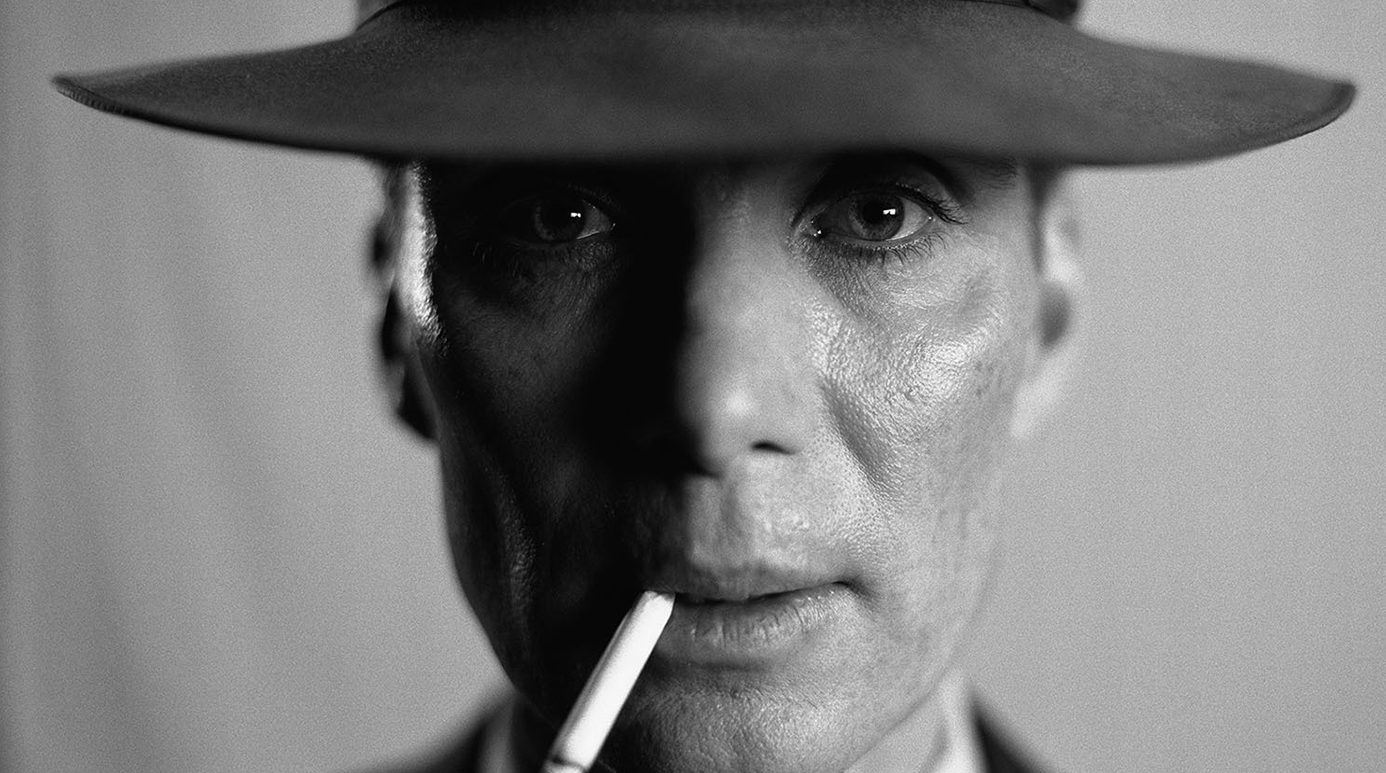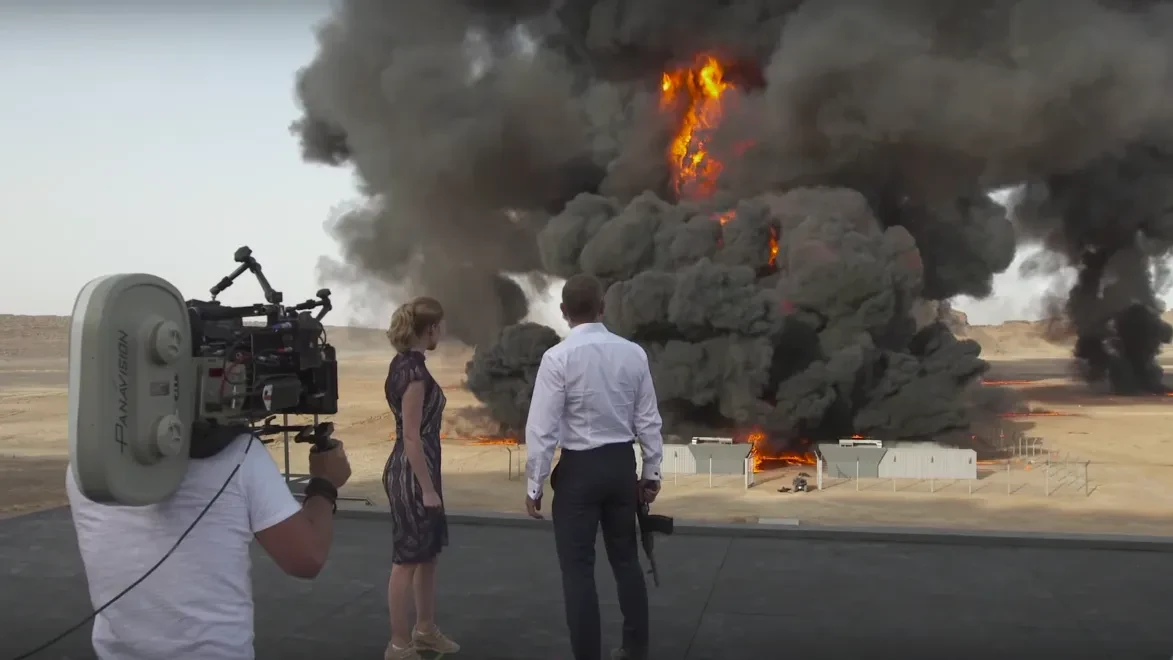Beyond its compelling narrative and well-portrayed characters, Christopher Nolan’s Oppenheimer was a visual stunner. The film had several sequences that left the audience breathless. Take, for instance, the highly-praised cinematic recreation of the historical Trinity test, which marked the first time a nuclear weapon was detonated on July 16, 1945. Owing to Nolan’s dedication to practical filmmaking, the scene was entirely free of any CGI effects.

The renowned director and his team opted to utilize an old technique to recreate the spine-chilling imagery, ensuring that the audience would be fully immersed in the ominous implications of the scene. And immersed they were. However, keeping aside stylistic preferences, we must address the ecological concerns that take precedence over realistic or practical filmmaking. After all, this is not the first time Hollywood has exhibited an insatiable enthusiasm for emulating life-like explosions.
Do these visual spectacles take into account the prevalent environmental issues that threaten our existence, or are they simply disregarded for the sake of entertainment?
How Oppenheimer Re-created The Trinity Test Scene

Filmmaker Christopher Nolan once revealed that special emphasis was put into the cinematic rendition of the Trinity test. In an interview, he affirmed, “We always knew that the Trinity test would have to be a showstopper. It’s the fulcrum that the whole story turns on.” If you’ve watched the film by now, you’ll realize immediately what the director meant by this statement. On several occasions, Nolan made it clear that he intended to evoke a sense of danger in the audience through the sequence. With CGI, it would’ve felt “safe”—which he couldn’t rely on when it concerned his magnum opus.
Hence, the procedure that was ultimately chosen by Nolan and the Oppenheimer team made use of a filmmaking technique known as forced perspective. Revealing the intricacies of the process, visual effects supervisor Scott R. Fisher stated the following:
“We don’t call them miniatures; we call them ‘big-atures. We do them as big as we possibly can, but we do reduce the scale so it’s manageable. It’s getting it closer to the camera, and doing it as big as you can in the environment.”

Read also: Oppenheimer’s Most Devastating Nuke Bombing Line Was Improvised
To encapsulate the visual essence of the scene, the pyrotechnic methods involved the creation of an “intense blaze”, which was achieved with the integration of gasoline and propane. To bring to life the silent, blinding flash witnessed in the film, aluminum powder, and magnesium were added to the blaze.
Without any doubt, the hard work exuded by the Oppenheimer team reflected on the theatre screen. The gasp-worthy sequence became a prominent highlight of the endeavor. But at the end of the day, such practical effects do raise the question of sustainability. Are these visual representations executed at the expense of our environment? Looking at another example may highlight why this issue has become a matter of immense concern.
Daniel Craig’s Film Shattered A Concerning Record

Daniel Craig‘s James Bond film, Spectre garnered quite the buzz after it was crowned for a record-breaking achievement. In 2015, the Sam Mendes-helmed endeavor set a Guinness World Record for the Largest Film Stunt Explosion. The sequence took place in Erfoud, Morocco, and was notable for having utilized 2,224 gallons of fuel and 73 lbs. of explosives. What is even more astounding is that the total yield from the blast was 68.47 tonnes of TNT equivalent. While undoubtedly an impressive feat, one can only ponder the consequences such practical stunts often birth.
The emissions generated from such spectacles were always a cause of trepidation. In a 2006 UCLA study, it was concluded that the film and television industries contribute more to air pollution in the Los Angeles area than virtually all of the other five sectors that were examined.
When it comes to the practically filmed explosions or the use of pyrotechnics, the aftermath does not only point to a decrease in air quality. It also leads to the generation of waste, excessive consumption of energy, noise pollution, chemical contamination, etc. It is additionally known to have an impact on wildlife, based on the location where such stunts are performed. The nature of these “life-like” sequences brings forth terrible implications for our planet.

Read also: Another Oppenheimer Star Races Past Tom Hardy, Henry Cavill In James Bond Race
While Hollywood cannot be stated as the sole contributor to the aforementioned phenomena, it must be realized that our entertainment often comes at the expense of the environment. It must be stressed that such reports and claims bear no intention of diminishing the grandeur of films such as Oppenheimer or Spectre. Movies have always captured the attention of humans. Endeavors such as the 2023 Cillian Murphy starrer are a testament to the creativity, innovation, and powerful storytelling skills that talents like Nolan possess.
However, in line with Oppenheimer‘s final quote, we need to be careful about the series of events that can trigger catastrophic consequences for humanity. If there are comparatively safer alternatives (like CGI) that can bring to life grand-scale, previously unimaginable concepts, should realism, at the cost of our environment, be the ultimate goal? It is certainly something to think about.
Source: IndieWire

